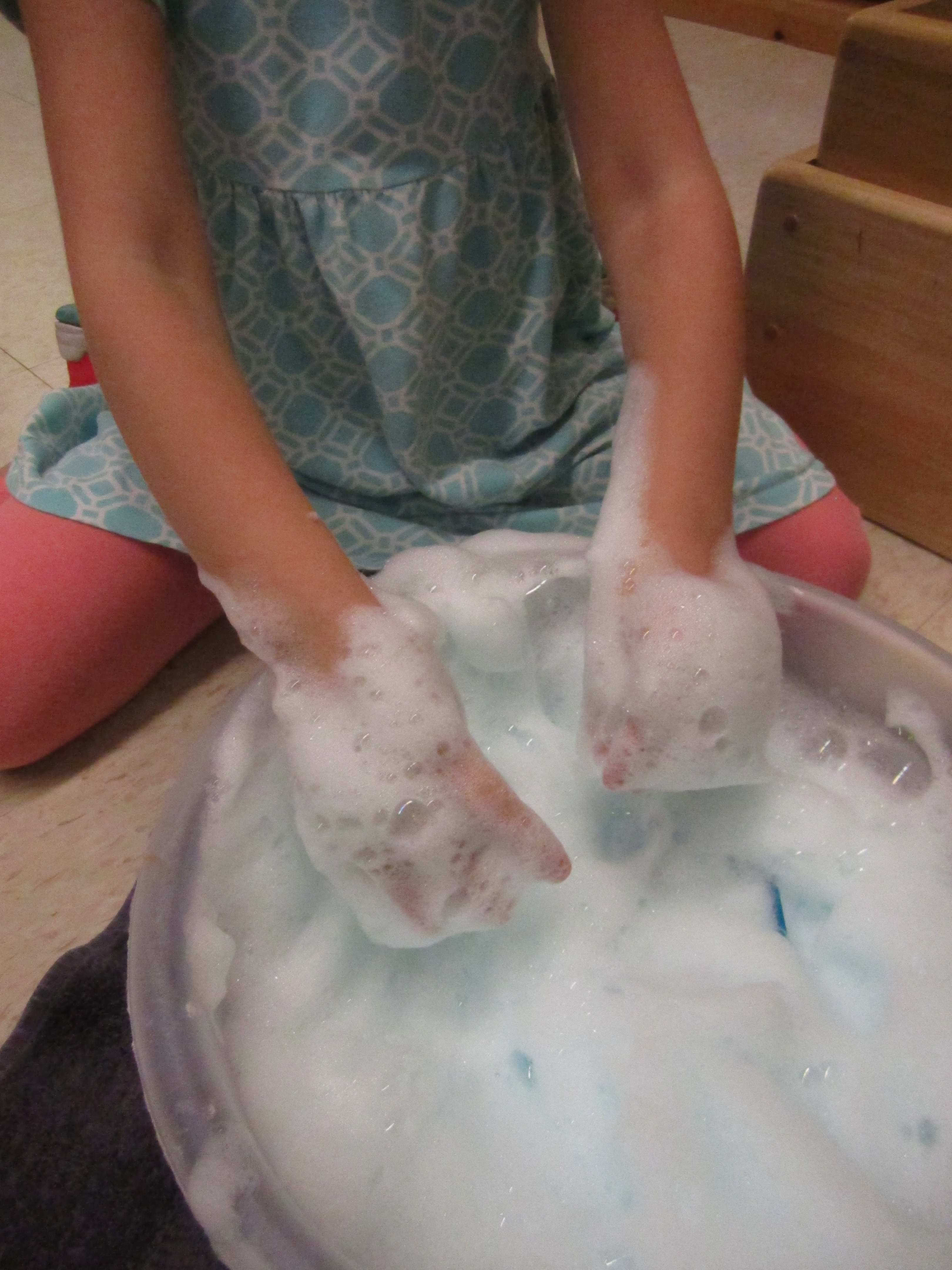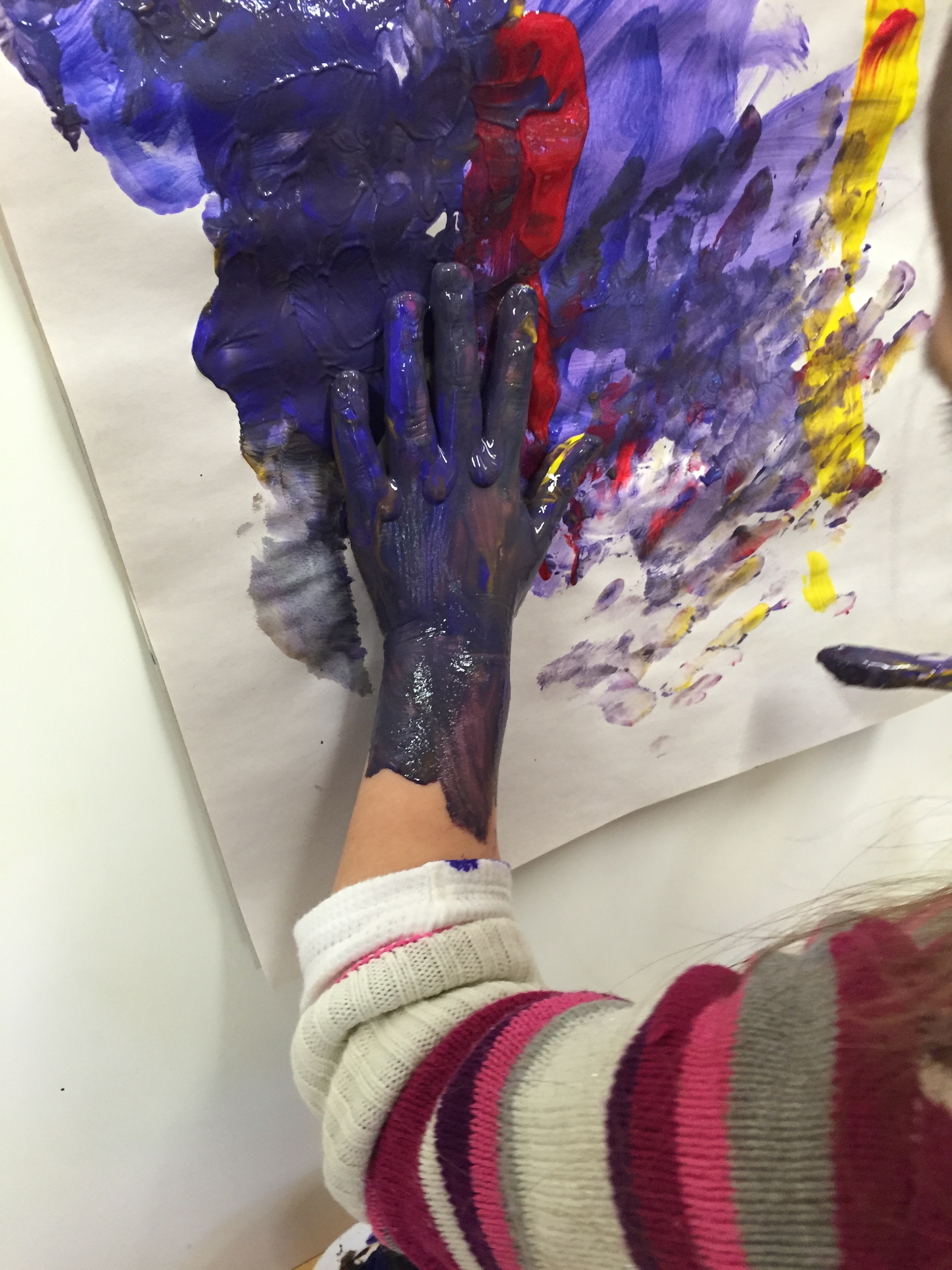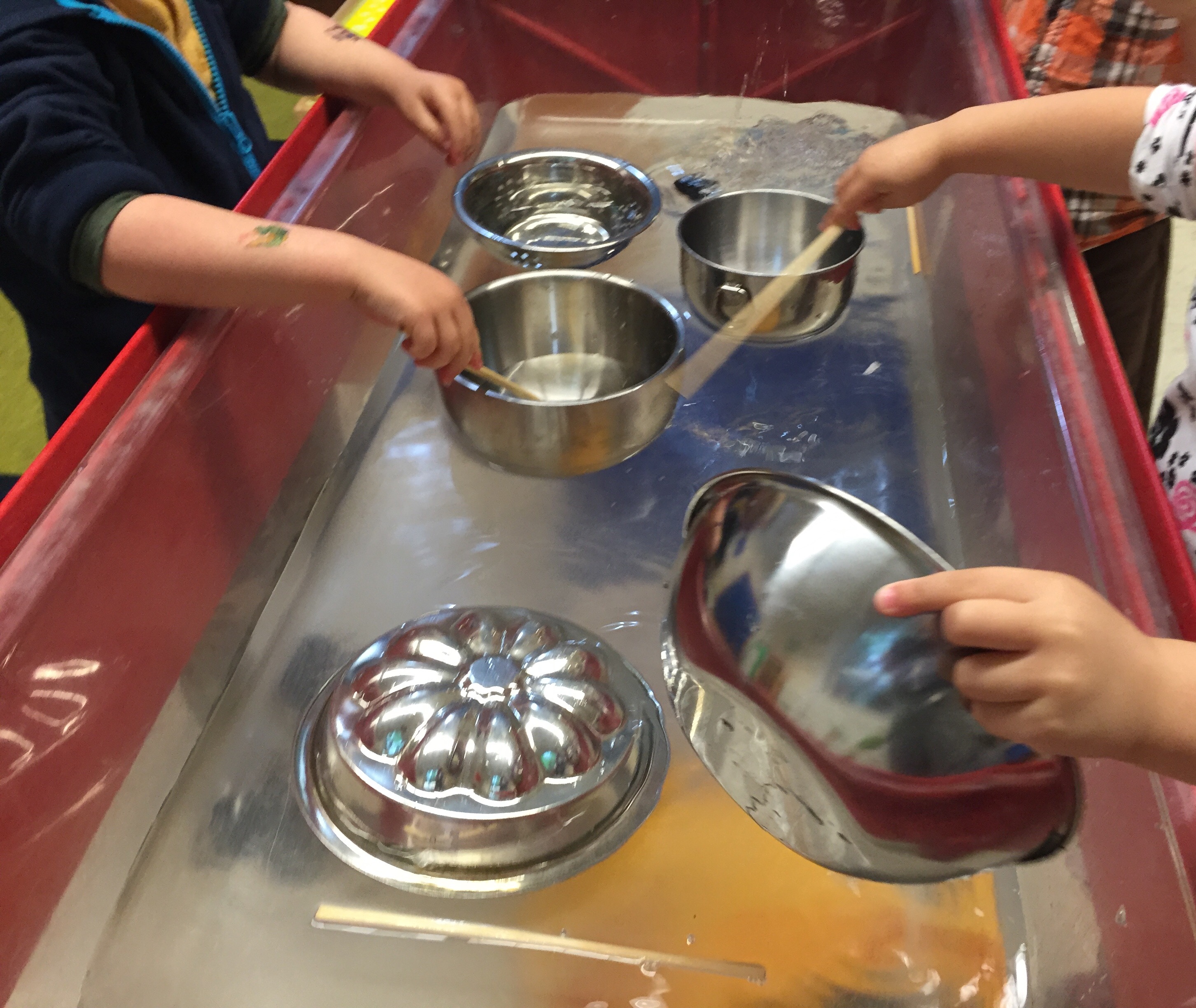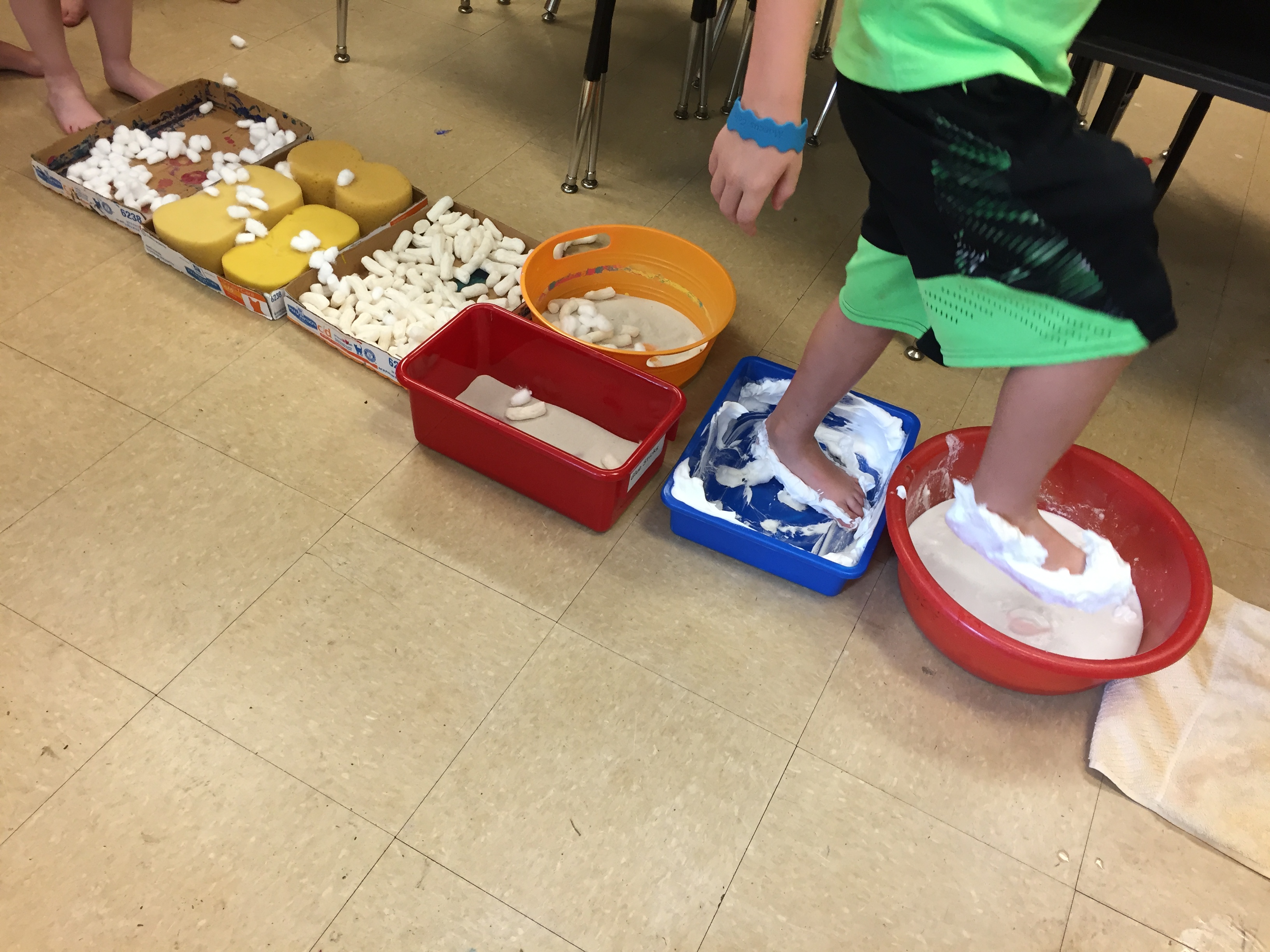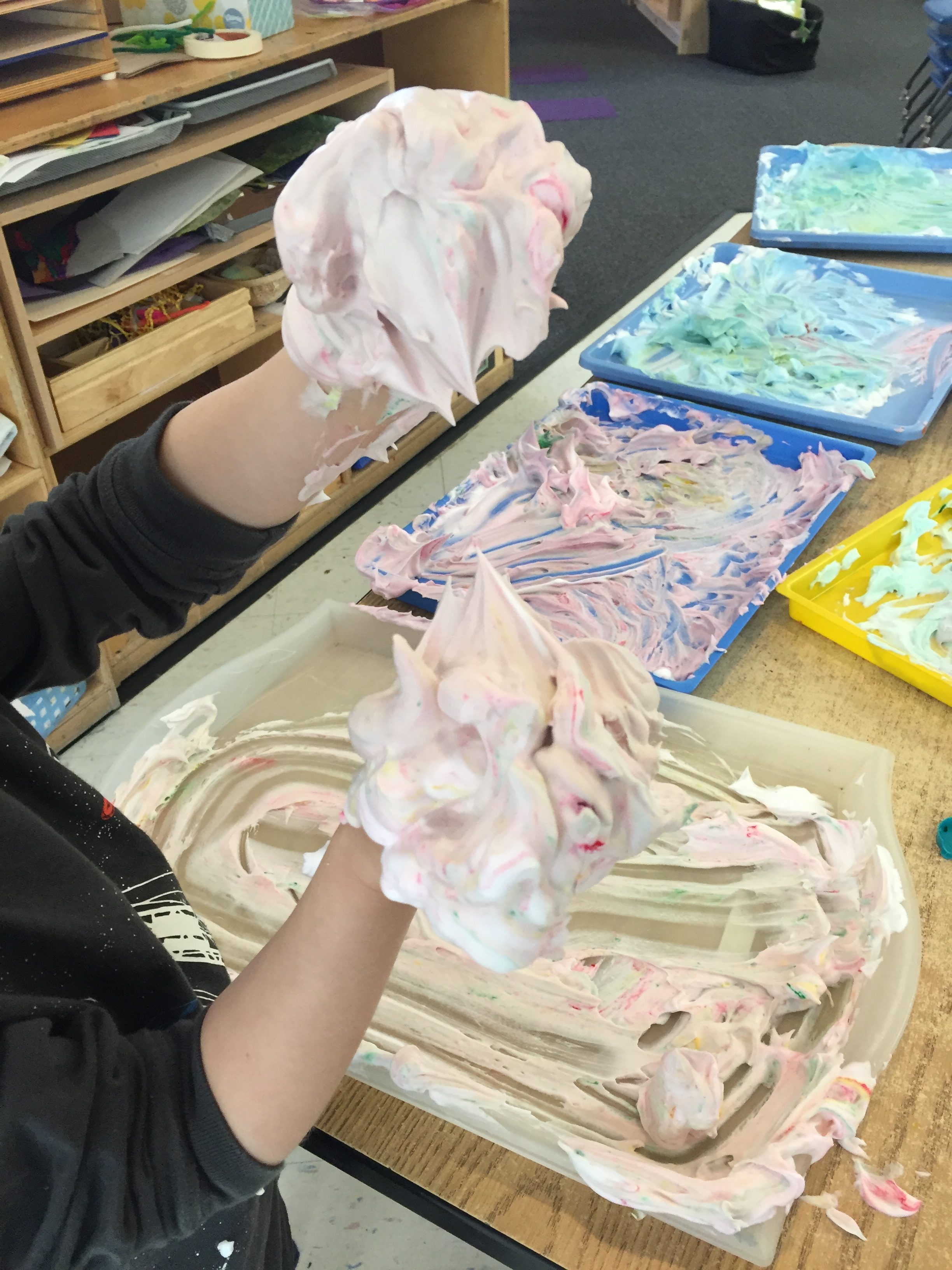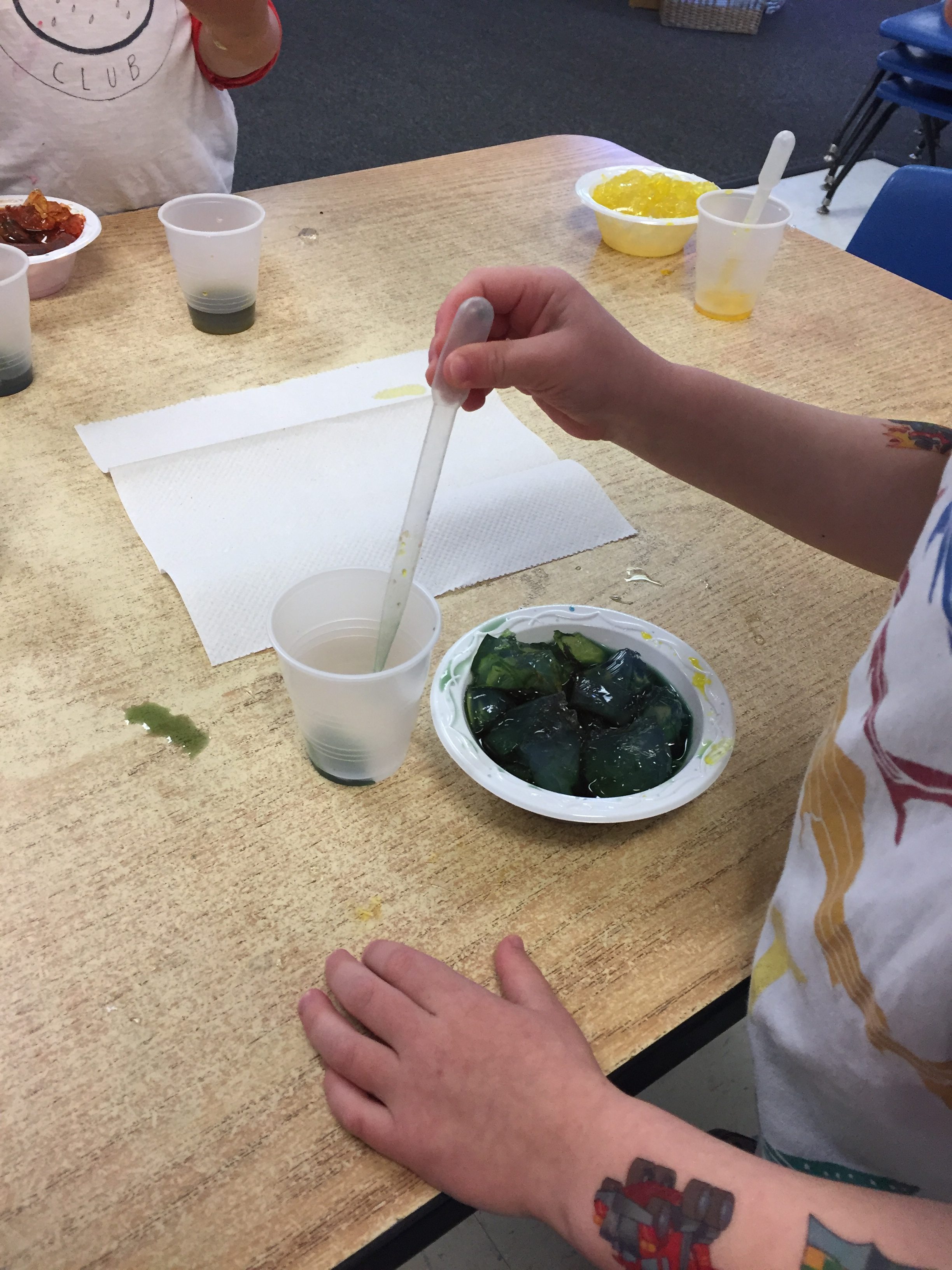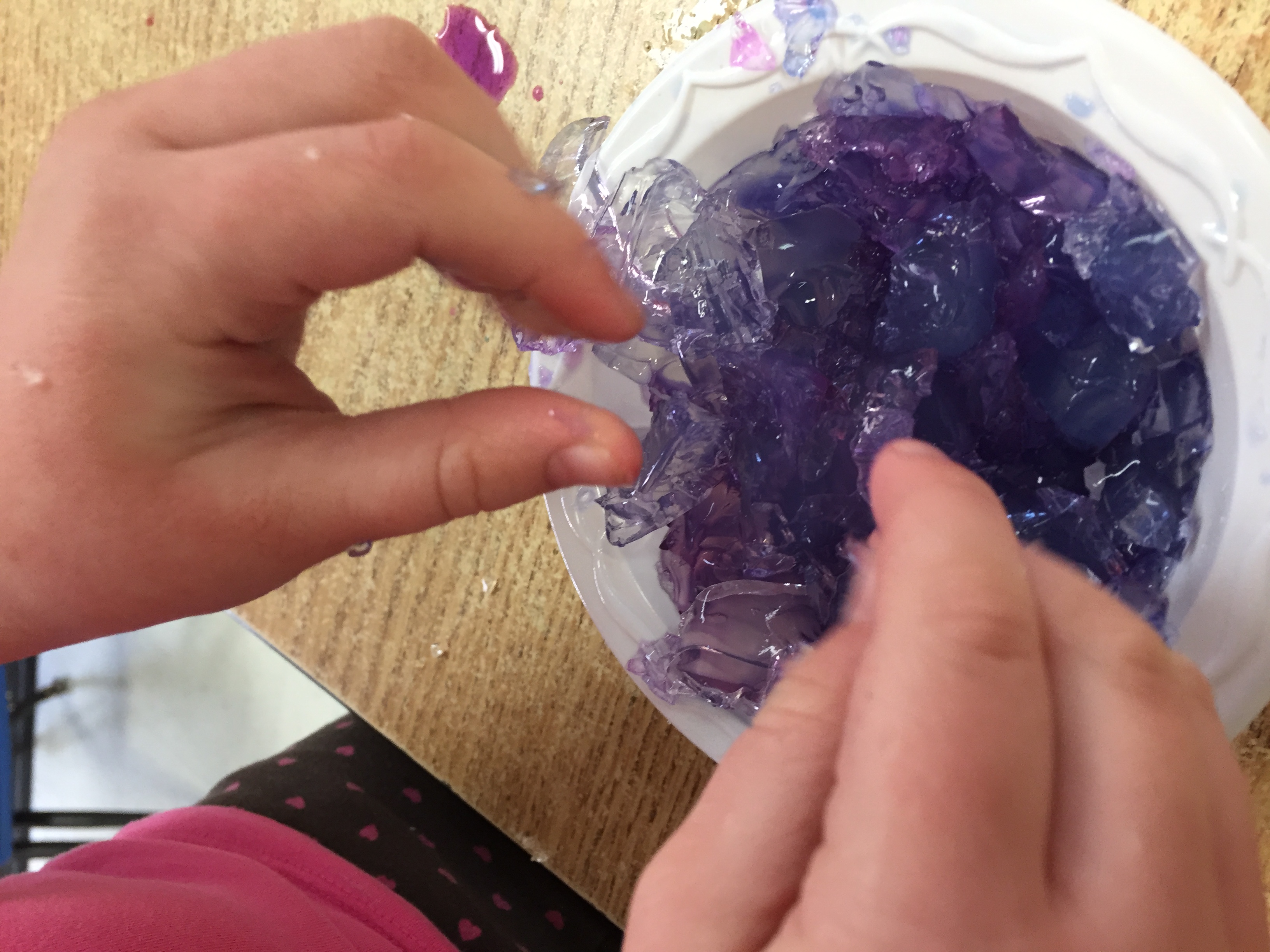Sensory play for science learning
By Peggy Ashbrook
Posted on 2019-02-15
Children and people of all ages continually explore and learn through their senses. Prior experiences that build understanding of how we use our senses to learn about the world are the foundation for understanding the Next Generation Science Standards Disciplinary Core Ideas. Some children seek out specific experiences such as the two-year-old who would enthusiastically cling to my arm when I wore an especially soft microfiber fleece jacket, and the four-year-old who liked to be the last one to wash her hands so she could be there long enough to create a mound of bubbles to feel. Stomping in puddles and rolling down a grassy slope were favorite experiences of other children. The weight or softness of a certain doll, the bark texture of a special stick, or the size of a particular toy car, are why these objects meet the needs of some children.
- Feeling dried grasses.
- Feeling dish soap bubble foam.
- Feeling tempera paint.
Debra Hunter gives examples of how children address multiple areas of development through play at the sensory table (2008), including cognitive and physical development. An intentionally designated space or time for planned messy experiences make it possible for both children and adults to linger with the experience and not feel stressed to end at a set time. Having fun at a sensory table engages children in exploring the properties of matter, developing fine motor skills, and developing a beginning understanding of measurement and volume, force, and motion. Working together to share tools or create a shared experience strengthens children’s oral language and social/emotional development. Experiences with sensory materials introduce new vocabulary such as “sticky” and “absorb.”

 A sensory play experience attracts different children depending on what material is provided. Just as some children are drawn to certain materials, others avoid them. “Children differ in their ability to process and respond to information from the environment while engaging in activities” (Thompson and Raisor). Sensory activities that support infant and toddler exploration require closer supervision but provide the same opportunities for learning about the world (Schwarz and Luckenbill). Extensions 25(5), the HighScope newsletter has three articles about sensory play: Look, Listen, Touch, Feel, Taste: The Importance of Sensory Play; Observing and Supporting the KDIs at the Sand and Water Table; and Providing Sensory Experiences That Meet the Needs of All Infants and Toddlers; that remind us that sensory play is “’food for the brain.’ Stimulating the senses sends signals to children’s brains that help to strengthen neural pathways important for all types of learning.”
A sensory play experience attracts different children depending on what material is provided. Just as some children are drawn to certain materials, others avoid them. “Children differ in their ability to process and respond to information from the environment while engaging in activities” (Thompson and Raisor). Sensory activities that support infant and toddler exploration require closer supervision but provide the same opportunities for learning about the world (Schwarz and Luckenbill). Extensions 25(5), the HighScope newsletter has three articles about sensory play: Look, Listen, Touch, Feel, Taste: The Importance of Sensory Play; Observing and Supporting the KDIs at the Sand and Water Table; and Providing Sensory Experiences That Meet the Needs of All Infants and Toddlers; that remind us that sensory play is “’food for the brain.’ Stimulating the senses sends signals to children’s brains that help to strengthen neural pathways important for all types of learning.”
- Sound and wetness.
- A sensory walk.
- Beginning the exploration
- Shaving cream paint.
- First using a pipette to add color.
- Gelatin with liquid water colors.
Taking allergies and other safety concerns such as eye protection into consideration, and reflecting on the daily routine and available spaces, opens up possibilities for creative sensory learning experiences.
Boddy, Jessica. 2017. Are We Eating Our Fleece Jackets? Microfibers Are Migrating Into Field And Food. NPR. February 6, 2017, 1:21 PM ET
High Scope. 2011. Extensions newsletter. Volume 25 No. 5. https://highscope.org
Hunter, Debra. 2008. Teachers on Teaching: What Happens When a Child Plays at the Sensory Table? Young Children. 63(6): 77-79.
Schwarz, Trudi and Julia Luckenbill. 2015. Let’s Get Messy! Learning Through Art and Sensory Play in Spotlight on Young Children: Exploring Play. NAEYC. https://www.naeyc.org/resources/pubs/books
Thompson, Stacy D. and Jill M. Raisor. 2013. Individualizing in Early Childhood: The What, Why, and How of Differentiated Approaches: Meeting the Sensory Needs of Young Children. Young Children. 68(2): 34-43 https://issuu.com/naeyc/docs/meeting_sensory_needs_thompson_0513
Vanover, Sarah. The Importance of Sand and Water Play. National Association for the Education of Young Children blog. 7/18/2018 https://www.naeyc.org/resources/blog/importance-sand-and-water-play
Disclaimer: The views expressed in this blog post are those of the author(s) and do not necessarily reflect the official position of the National Science Teaching Association (NSTA).




